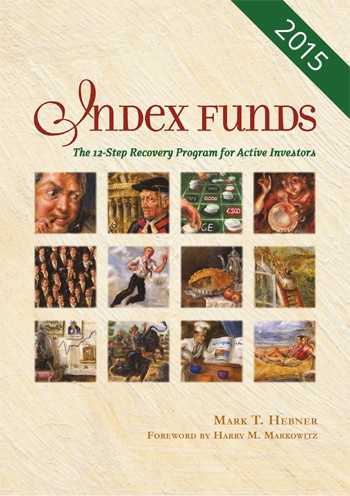The Investor s Library Modern Portfolio Theory A Nobel PrizeWinning Approach
Post on: 14 Октябрь, 2015 No Comment

How does diversification reduce risk?
The mechanism to reduce risk is the way returns on assets move together. If, using our all-weather example, both assets were to pay off 20% on a sunny day and nothing on a cloudy day, then returns on these two assets are said to be perfectly correlated (correlation coefficient = 1) and there would be no point in diversifying. These asset prices would rise and fall in unison, so owning both assets would be superfluous. The trick is to find assets that are less than perfectly correlated, or even negatively correlated.
For this reason international diversification makes very good sense. Numerous studies have documented the benefits of going global with your investments. These have shown that including foreign securities in a portfolio can increase returns for a given level of risk. The efficient frontier of a portfolio constructed with only domestic stocks.
The chart shows that investing in different industries within a single country is riskier than investing in just one industry across different countries. A globally diversified portfolio represents less risk than a diversified domestic portfolio. The key is the smaller correlation between domestic securities and foreign ones than between different domestic securities. Country-wide factors such as stability, business conditions, monetary and fiscal policies, and demographics tend to have the most impact on domestic securities, so financial markets from one country to another will tend to differ significantly. If you have shied away from investing abroad, you have actually been subjecting your portfolio to greater risk.
It is also interesting to note that risk falls steeply as you begin to diversify. With a holding of around 40 stocks, all the benefits from diversification have been almost nearly achieved. Like anything else, diversification has its limits. And as world markets become more integrated, the limits will be more easily reached.
Investors should still be able to profit handsomely from diversifying. Although markets are not completely independent — all correlations on returns are positive — many correlation coefficients are still significantly below one. U.S. equity markets are more closely correlated with the markets of Canada (0.81) and the U.K. (0.63) than with Japan (0.44) or Germany (0.41). One good combination of stocks to own would be from Switzerland, Japan, U.K. and Australia.
Emerging markets also vary in the degree they move with trends in the world’s major economies. For example, Hong Kong and Argentina, with their currencies pegged to the dollar are vulnerable to rises in U.S. interest rates, as is Singapore, with a high dollar component in its trade-weighted currency basket.
Rewards for taking risks — if you’re in it for the long haul!
Risk is almost inevitable in any investment. Most assets carry the uncertainty of whether they will realize a return in the future, and if so, how much. Stock prices move up and down and dividend yields may vary from year to year. Perhaps the only risk-free way to keep your money is to lock it up in a fire-proof safe. Unfortunately, if you wait long enough, it loses in purchasing power. Even securities issued with the full faith and credit of the U.S. government are not riskless. The price of a U.S. Treasury bond maturing in 30 years may fall in a year if interest rates rise.
Our concepts of risk and uncertainty naturally impose negative biases to investments with high volatility. Yet research in different countries on the historical performance of stocks — considered the most volatile asset class — show that investors are rewarded for taking on greater risk if they have the discipline to hold on to their investments. A buy-and-hold strategy can smooth out the bumps in the stock markets.
During the period between 1926 and 1994, the best one-year return in the U.S. stock market was a 54% rise in 1933 and the worst was a 43% decline in 1931. Over a holding period of 10 years, the best annualized return was a positive 20% and the worst was a negative 1%. If we increase the time frame to 20 years — any 20 years between 1926 and 1994 — investors are always assured of a positive return ranging between 17% and 3%.

Similarly, if you look at the development of German common stocks in the past 120 years, the worst fall was a loss of 38%. But in Germany, it seems investors don’t need as much patience as in the U.S. a holding period of 10 years returns an average of 35% in the best 10-year case and positive 1% in the worst case. For a time frame of 15 years, the stock market’s volatility moderates to a range of 24% and 4%.
In order to increase portfolio returns, investors have to take on greater risk. Injecting stocks into a portfolio for higher returns therefore translates to a bumper ride. To smooth out the bumps, investors would do well to (a) diversify globally and (b) hold a portfolio of stocks for long enough periods. You may not win a Nobel Prize, but you will be on the right road to investment success.
Jurg M. Lattmann is a Swiss investment counsellor and expert in Swiss annuities.
More information on international investment can be found at The Offshore Entrepreneur .














